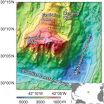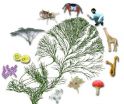(Press-News.org) FORT COLLINS - In the last 50 years, modern medicine has made astounding advances in surgery, yet many of today's veterinary and human medicine students still hone basic surgical and suturing skills on carpet pads and pig's feet before transitioning to a live patient. An invention by Colorado State University veterinarians provides students with artificial body parts that look, feel, behave, and even bleed just like real skin, muscles and vessels.
The artificial replicas of sections of human and animal bodies -- such as an abdominal wall -- give students a realistic learning environment that will bridge the gap between classroom lectures and procedures such as surgical cuts and sutures on real human or animal patients.
"It is a significant, stressful leap for medical and veterinary students from the classroom to the surgery suite," said Dr. Dean Hendrickson, a veterinarian and director of CSU's Veterinary Teaching Hospital and one of the inventors. "Industry standards for training sometimes actually teach incorrect techniques, or skills that don't translate into real-world situations, so students don't have the ability to realistically prepare for surgery before a live patient. These artificial simulations help students master their technique, dexterity and confidence before they operate for the first time on a person or someone's pet."
The artificial tissues consist of layers of silicone that closely simulate skin, connective tissue and muscle. Built into the silicone are realistically placed and sized "blood vessels" that are connected to an artificial blood source that supplies the tissue with realistic bleeding. For example, students practicing sutures will experience blood coming into a wound or incision from both sides of the tissue at realistic locations and rates.
Some models are colored realistically, such as a brown-skinned abdominal wall of a horse, with white layers and red layers representing muscles and tissues. However, students also may use simulated tissue in translucent material so they can better view and understand, for example, suture patterns from a three-dimensional perspective while learning correct stitches.
"Our hope is that, with this model, we can begin to help students build better skills that will make for better outcomes," said Dr. Fausto Bellezzo, a co-creator of the technology with Hendrickson. Bellezzo is also a veterinarian and researcher at CSU's Veterinary Teaching Hospital.
The creators are working with CSU Ventures to identify investors and partners to advance development of the model for teaching animal and human medicine. CSU Ventures is a subsidiary corporation of the Colorado State University Research Foundation, a private, non-profit foundation that helps the university move technologies from the university into the commercial sector. The foundation has filed a provisional patent for the technology.
INFORMATION:
Colorado State University's Animal Teaching Hospital is part of the College of Veterinary Medicine and Biomedical Sciences.
A video illustrating this model is available on CSU's YouTube channel at http://www.youtube.com/watch?v=ILV-tI1hdA8.
Invention helps students learn surgical techniques before operating on patients
2010-11-20
ELSE PRESS RELEASES FROM THIS DATE:
UH physicists study behavior of enzyme linked to Alzheimer's, cancer
2010-11-20
HOUSTON, Nov. 19, 2010 – University of Houston (UH) physicists are using complex computer simulations to illuminate the workings of a crucial protein that, when malfunctioning, may cause Alzheimer's and cancer.
Margaret Cheung, assistant professor of physics at UH, and Antonios Samiotakis, a physics Ph.D. student, described their findings in a paper titled "Structure, function, and folding of phosphoglycerate kinase (PGK) are strongly perturbed by macromolecular crowding," published in a recent issue of the journal Proceedings of the National Academy of Sciences, one ...
New study into bladder regeneration heralds organ replacement treatment
2010-11-20
Researchers in the United States have developed a medical model for regenerating bladders using stem cells harvested from a patient's own bone marrow. The research, published in STEM CELLS, is especially relevant for paediatric patients suffering from abnormally developed bladders, but also represents another step towards new organ replacement therapies.
The research, led by Dr Arun Sharma and Earl Cheng from the Feinberg School of Medicine at Northwestern University and Children's Memorial Research Center, focused on bone marrow mesenchymal stem cells (MSCs) taken from ...
Busy microbial world discovered in deepest ocean crust ever explored
2010-11-20
CORVALLIS, Ore. – The first study to ever explore biological activity in the deepest layer of ocean crust has found bacteria with a remarkable range of capabilities, including eating hydrocarbons and natural gas, and "fixing" or storing carbon.
The research, just published in the journal PLoS One, showed that a significant number and amount of bacterial forms were present, even in temperatures near the boiling point of water.
"This is a new ecosystem that almost no one has ever explored," said Martin Fisk, a professor in the College of Oceanic and Atmospheric Sciences ...
AgriLife scientist: Functional amino acids regulate key metabolic pathways
2010-11-20
COLLEGE STATION - Functional amino acids play a critical role in the development of both animals and humans, according to a Texas AgriLife Research scientist.
In a journal article appearing in the American Society for Nutrition (Advances in Nutrition 1:31-37, 2010), Dr. Guoyao Wu, AgriLife Research animal nutritionist and senior faculty fellow in the department of animal science at Texas A&M University, calls for scientists to "think out of the box" and place more emphasis on this area of study.
"We need to move forward and capitalize on the potential of functional ...
Reading the signs: Plants and animals found common ground in response to microbial threats
2010-11-20
Though it's been at least a billion years since plants and animals shared a common ancestor, they have through the eons shared a common threat in the form of microbes, including bacteria, eukaryotes and viruses. This has resulted in remarkably similar mechanisms for detecting the molecular signatures of infectious organisms that hold promise for the future treatment of infectious diseases in humans.
The recognition of microbial signature molecules by host receptors is the subject of a paper published in the journal Science titled "Plant and Animal Sensors of Conserved ...
Kidneys: Produce-rich diet improves long-term health, melatonin improves short-term health
2010-11-20
1. Kidney Disease Patients Benefit from a Diet High in Fruits and Vegetables
Healthy Foods Can Help Maintain Kidney Function
In patients with kidney disease, the Western diet produces an acidic environment in the body that has numerous negative effects and worsens with age as kidney function declines. Nimirit Goraya, MD (Texas A&M College of Medicine and Scott and White Healthcare) and her colleagues conducted a study to see if consuming a diet high in fruits and vegetables that counteract this acidity might improve the kidney health of 40 patients who have moderately ...
Global Sustainable Tourism Organization Planeterra Taps Ecotourism Visionary Megan Epler Wood as Director
2010-11-20
Gap Adventures founder Bruce Poon Tip announced today the appointment of ecotourism industry veteran Megan Epler Wood as Director of Planeterra (http://www.planeterra.org), the global non-profit dedicated to sustainable community development through travel and voluntourism. Epler Wood will share duties with newly named Associate Director Paula Vlamings.
"I have known Megan for many years and have such deep respect for her and for her commitment and leadership in defining and building on her vision for sustainable travel," says Poon Tip. "She is the best person on Earth ...
Strathclyde University and Associates: New Faces at SESG
2010-11-20
We have seen big changes at SESG over the past few months. Meet the new team!
Strathclyde University and Associates: Dr Jeremy Cockroft took over as director of SESG at the beginning of April 2006. He is supported by Dr Jon Hand and Dr Aizaz Samuel. We have a vacancy that we hope to fill soon. Here is a brief resume of the people now in the group: Jon has had experience as a practicing architect specializing in low energy buildings and alternative construction techniques. He is a simulation consultant in several continents, a software developer, and a mentor to companies ...
Homeschooling Families and Friends Get a Free Guide to Festive Planning and Frugal Gifting
2010-11-20
The staff and friends of The Old Schoolhouse Magazine (TOS) have come together to share their favorite family traditions, recipes, and more by offering the 2010 Digital Holiday Supplement magazine.
Gena Suarez, publisher of The Old Schoolhouse Magazine, states: "If you're looking for inspiration to get your holiday spirit revived for the upcoming season of festivities, you've come to the right place. TOS has put together a gorgeous, full-color, digital magazine filled to the virtual brim with traditions-in-the-making.
This is TOS's gift to the homeschooling community, ...
Swimwear designer Tara Grinna predicts swimwear trends for 2011
2010-11-20
For those overwhelmed with choices on what to wear for summer 2011, swimwear ( http://www.taragrinna-swimwear.com ) designer Tara Grinna provides a glimpse of what could be the trends for Spring/Summer 2011.
"The Fashion Swim Week in Miami indicates a very colorful 2011. There's going to be plenty of choices to play with colors. Colors like blue green, orange and shades of brown are likely to be the most popular. Turquoise and light skies blended with greens are predicted to be a great hit for 2011. Gold is another color that's likely to rule the 2011 swimwear scene, ...


